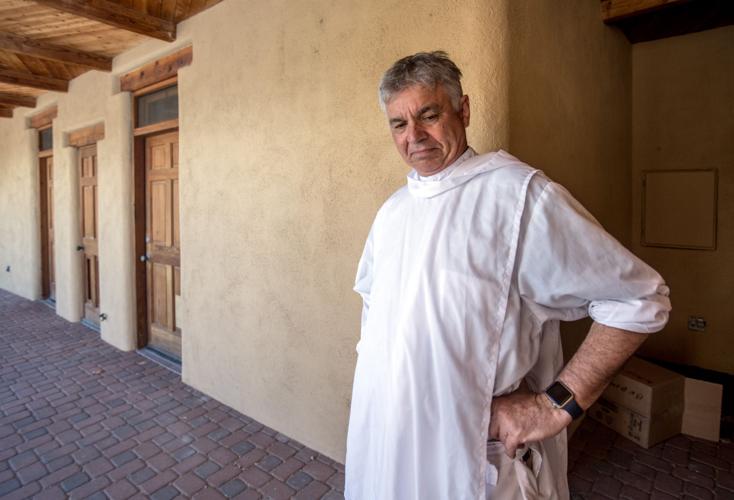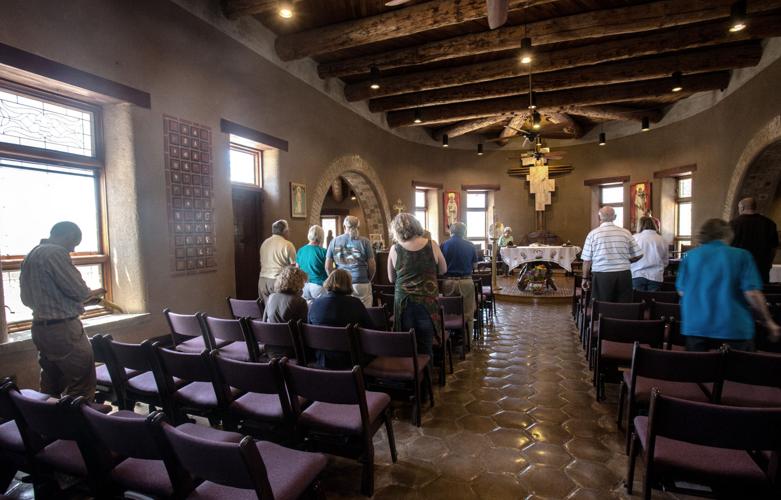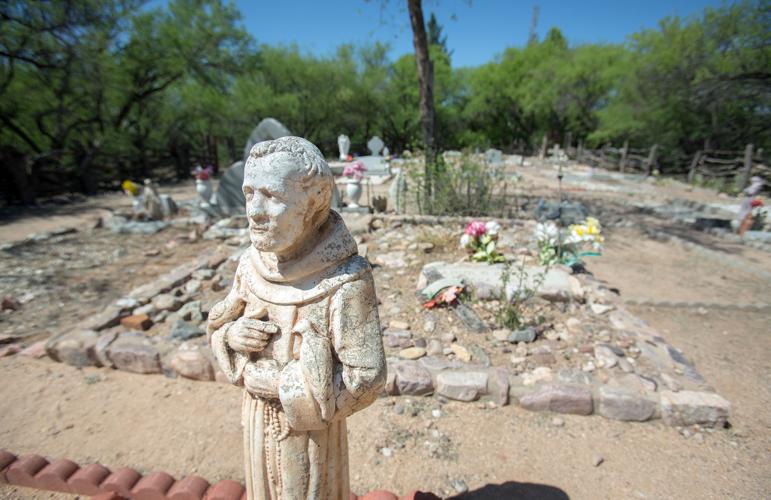The holy hoboes of Holy Trinity Monastery are deciding whether to hit the road for good as the St. David religious community faces an order to shut its doors.
The decree comes from on high — from leadership within the Order of Saint Benedict, the religious order under which Holy Trinity was formed in 1974.
In February, the Abbot General D. Diego M. Rosa, the top leader of the Benedictine Congregation of Santa Maria of Monte Oliveto Maggiore in Italy, issued a decree closing the monastery and removing the Rev. Henri Capdeville as its prior.
With only a priest and two brothers at the monastery, the Benedictine Congregation decided to dissolve the religious community “because there are an insufficient number of monks at Saint David to maintain a regular monastic life,” wrote the Very Rev. Mark-Ephrem Nolan in an email. Nolan, a Benedictine monk from Northern Ireland, was appointed by the abbot general to communicate the decree in person.
Capdeville and the two brothers are not the only ones who call the estimated 150-acre property home. A handful of laypeople devoted to the Rule of Saint Benedict — called oblates — live on site, along with the self-proclaimed holy hoboes who park in the monastery’s Monte Cassino RV Park each winter.
Those residents will be less affected than the three vowed religious men, according to the congregation.
Taking it to court
After Capdeville received the orders and “refused to obey the decrees which the Congregation issued and to cooperate as required,” the congregation took the matter to Cochise County Superior Court, wrote Nolan, whom the decrees appointed president of the monastery’s corporation in lieu of Capdeville.
Capdeville requested that the congregation reconsider the decree and though it was modified, it remained mostly the same, said his attorney, Lisa Anne Smith of DeConcini McDonald Yetwin and Lacy PC.
Capdeville, 60, has lived at the monastery about 40 years. He said his sister and stepfather are buried there. This is his whole life.
“It was too much for me,” Capdeville said of the news. “We came here with the idea that it would be a lifetime commitment to the monastery, and that’s what we understood.”
The congregation’s complaint of trespass filed with Superior Court requests the removal of Capdeville as the president of the monastery’s corporation and requires that he leave the grounds and turn over “keys, passwords and other useful information,” court records show.
It also identifies three congregation-selected men to be appointed to the monastery corporation (including Nolan). The congregation argues that as the religious order under which the monastery operates, it has authority over the Arizona sanctuary.
The heart of the case revolves around Capdeville leaving and who owns the corporation and property, Smith said. The hearing for a preliminary injunction was Wednesday, April 5.
The court sided with the congregation, meaning Capdeville has to move out by the end of April. He has been reassigned to Our Lady of Guadalupe Abbey in Pecos, New Mexico, he said.
Although the case is still in Superior Court, Capdeville filed an appeal and requested a stay that, if granted, would allow him to remain on the property while the Arizona Court of Appeals reviews the case.
A community disrupted
Thelma Meyer, 84, has been wintering at Holy Trinity for 27 years. An oblate, she is also the self-declared RV host. For her, this might be the end of an era.
Her late husband built the outdoor Stations of the Cross and oversaw the construction of a building used as a central hub for the RVers. The family funded the project, with the monastery matching the donation.
“But that’s water under the bridge,” Meyer said from her home in Iowa. She left the monastery in early April. “That has done its duty ... It drew people there and brought a family of RVers there who wanted to work ... It felt like a little extended home for everybody. So it was just really fantastic that everyone could get together and do what needed to be done.”
During peak snowbird season, oblate and monastery newsletter editor Tom McGuire estimated that around 20 people live on the grounds volunteering. McGuire, 77, and his wife, Florence, spend six months out of the year at the monastery in their RV.
RVers pay rent to work, doing upkeep for the monastery during their stays. Some come for the religious life. Others just like the property and the people.
“The Olivetan Benedictines are committed to dialogue with the residential lay oblates to maintain their presence and the Catholic and Benedictine ethos of Holy Trinity, ” Nolan wrote.
In a statement released after the April 5 hearing, the congregation also noted that “while there will no longer be Benedictine monks or priests at the facility, the Olivetan Benedictines also are working to find a way to continue some Catholic liturgies for those in the area that have come to rely on the Monastery church.”
Still, winter residents such as McGuire are waiting to decide if they’ll return to St. David . Meyer thinks her years there might be over.
The future of the property seems uncertain, and they will miss their friends.
“On a human level, it’s devastating to all of us that were a part of that community,” McGuire said.
Downsizing religious life
Beyond daily services and monastic living, the property also hosts spiritual retreats, an annual festival, a book shop and thrift store. Bird-watchers flock to the avian sanctuary along the San Pedro River, and rows of pecan trees greet visitors entering the grounds. A 70-foot-tall Celtic cross looms over the property.
These are a few of the ways the self-sufficient monastery has supported itself over the years.
“A lot of religious communities are in the process of downsizing,” said Mary Gautier, a senior research associate at the Catholic Church’s Center for Applied Research in the Apostolate. “They are converting mother houses into assisted-living facilities and combining congregations. ... The very small monasteries have had to all but disappear.”
The Benedictine Sisters of Perpetual Adoration, a Tucson monastery at 800 N. Country Club Road, announced its closure last fall. After more than 75 years in Tucson, the sisters will join the community’s larger congregation in Clyde, Missouri.
Gautier said that after World War I and World War II, American Catholicism saw a spike in young people interested in the priesthood and vowed religious life. Interest peaked in the late 1960s, meaning that many religious communities have aged as fewer new members join.
That leaves religious orders with the task of figuring out how to make use of excess property and care for aging members in a way that best supports the order.
“They’re trying to be good stewards,” Gautier said, noting that when monks age, they are no longer able to care for a property as easily.
The property in St. David is now being overseen by Rick Valencia, a Roman Catholic Diocese of Tucson deacon who lives in the area, said diocese spokeswoman Steff Koeneman, clarifying that the diocese does not currently own the property.
Valencia, who was appointed secretary and treasurer of the corporation in the decree, is just caring for the property on behalf of the Benedictine Congregation for the time being.
“They’re going to say I’m disobedient, but it’s really devastating,” Capdeville said. “If this wasn’t the place where I spent most of my life, and if I wasn’t 60 years old, maybe it would have been easier. But that’s where it’s at.”









